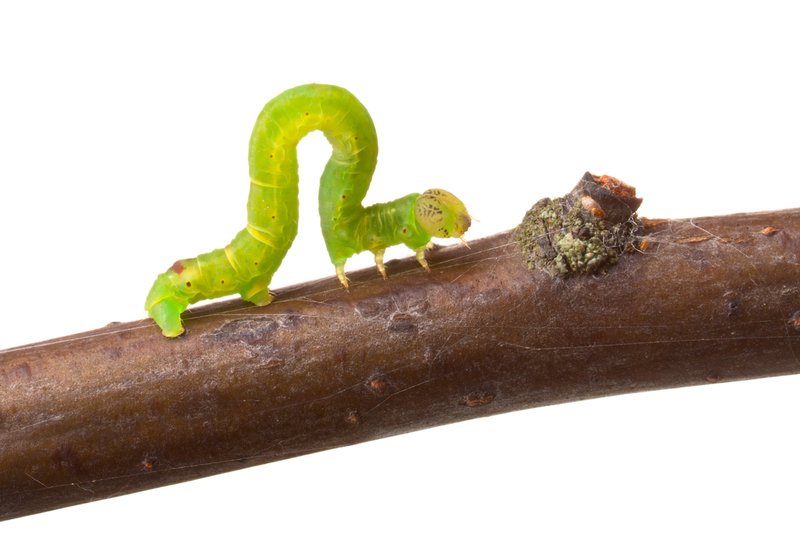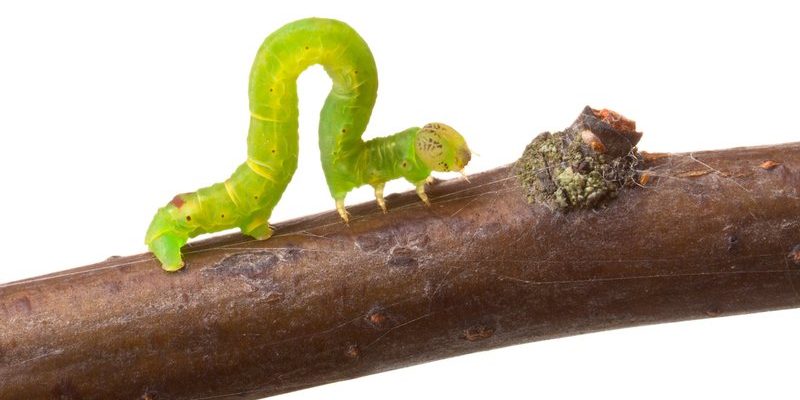
What Are Inchworms?
Inchworms aren’t actually worms at all! They are the larvae of geometer moths, named for their distinctive way of moving. They have elongated bodies and typically move by looping their bodies in a way that resembles measuring. This is why they’re often called “measuring worms.”
You might find these little creatures on trees and shrubs, munching on the leaves. The damage they cause is usually minor, but in large numbers, they can defoliate plants. The life cycle of an inchworm includes several stages, from egg to caterpillar, then to a moth. If you spot an inchworm, you’re likely seeing a larval stage ready to munch and grow!
Their appearances can vary widely, from green to brown and even to striking colors with unique patterns. Some inchworms can blend perfectly into their surroundings, making them excellent at hiding from predators.
Common Species of Inchworms
There are several species of inchworms you might encounter, and each has its own set of distinct characteristics. Here are a few of the most common ones:
- Interested Inchworm (Hypomecis punctinalis): Often found on hardwood trees, this inchworm is usually green with small, white stripes.
- Fall Cankerworm (Alsophila pometaria): This inchworm features a dark green or brown body and can be identified by its lack of prolegs, making its movement more pronounced.
- Branched Oak Moth (Phanera catullus): These inchworms are typically light brown with a few dark spots and are often seen on oak trees, which are their favorite food source.
Each of these species has its own unique charm, and knowing what to look for can enhance your outdoor adventures.
How to Recognize Inchworms by Color
Color is one of the easiest ways to start identifying inchworms. While many are green, which helps them camouflage against leaves, some have beautiful browns, yellows, or even striking patterns.
For example, green inchworms often mimic the leaves they consume, making them harder to spot. You might see them swinging gently on a leaf, trying to blend in. In contrast, species like the fall cankerworm may catch your eye with darker colors against the vibrant greens of trees.
If you look closely, you’ll notice that some species sport light stripes or dots. These markings can help you narrow down which inchworm you’re looking at. The patterns can often indicate the type of vegetation they prefer, leading you closer to their identity.
Identifying Movement Patterns
One of the most captivating things about inchworms is their unique mode of locomotion. Instead of crawling like many caterpillars, inchworms loop their bodies, creating a characteristic movement that reminds one of a measuring tape being pulled taut.
When identifying an inchworm, pay attention to how it moves. Do you see it pulling its rear end towards its front, then extending again? That’s a clear sign you’re looking at an inchworm! Some species may also sway gently, mimicking twigs in the breeze, which further helps them evade predators.
Knowing their movement patterns can add another layer to your identification skills, allowing you to distinguish inchworms easily from other garden critters.
Size and Shape Characteristics
Inchworms can vary in size, but most are typically about an inch to three inches long when fully grown. They usually have slender, elongated bodies that taper off at both ends.
When identifying an inchworm, consider its overall shape. Some inchworms have more pronounced lumps on their bodies, while others may appear smooth and flat. The difference in body shape can often be a clue to their identity. For instance, a stout inchworm like the brown-tipped leaf roller may have pronounced body segments, while others may be more slender and delicate.
It’s worth noting that factors like diet or environmental conditions can affect their size and appearance, so make sure to look for other identifying features as well.
Where to Find Inchworms
If you’re keen to spot inchworms in your area, they’re commonly found on deciduous trees such as oaks, maples, and birches. They tend to thrive in gardens, parks, and woodlands—basically anywhere with plenty of greenery!
Early mornings or after rain showers can be the best times to see these little guys in action. They are most active during warmer months, especially in spring and early summer, when they are busy munching on leaves. The best approach is to keep your eyes peeled while walking or gardening—you might just stumble upon a hidden inchworm!
Resources for Further Learning
If you’re keen on diving deeper into the world of inchworms, many resources can help you expand your knowledge. Field guides specific to caterpillars or local entomological societies may offer insights into identifying not just inchworms but other fascinating larvae as well.
You can also find apps and websites dedicated to insect identification, which allow you to take photos of inchworms and match them with species databases. This can be a fun way to challenge yourself while you’re out exploring nature! Don’t forget to share your findings with friends or family—you might inspire them to start their own search for these tiny creatures!
In conclusion, inchworms may be small and often overlooked, but learning how to identify common species can truly enhance your outdoor explorations. With their unique movement, colors, and patterns, inchworms add a delightful touch to the natural world. So next time you find yourself wandering outdoors, take a moment to pause and observe these little inching wonders—you never know what you might discover!

